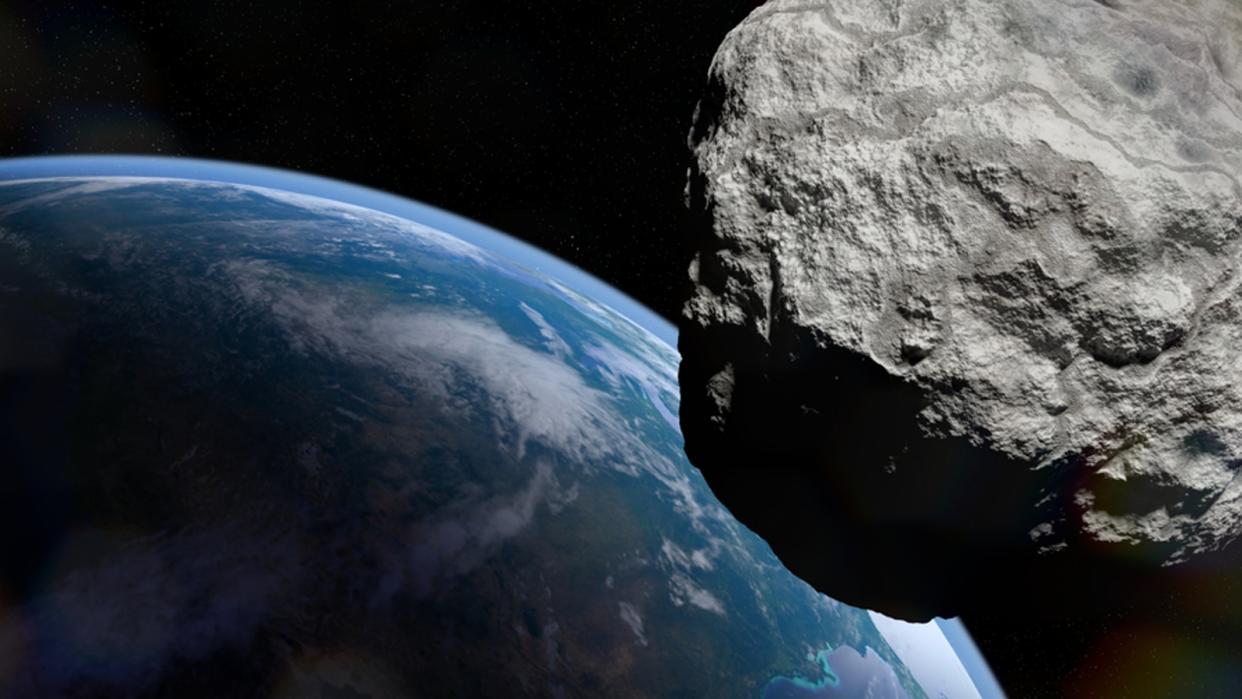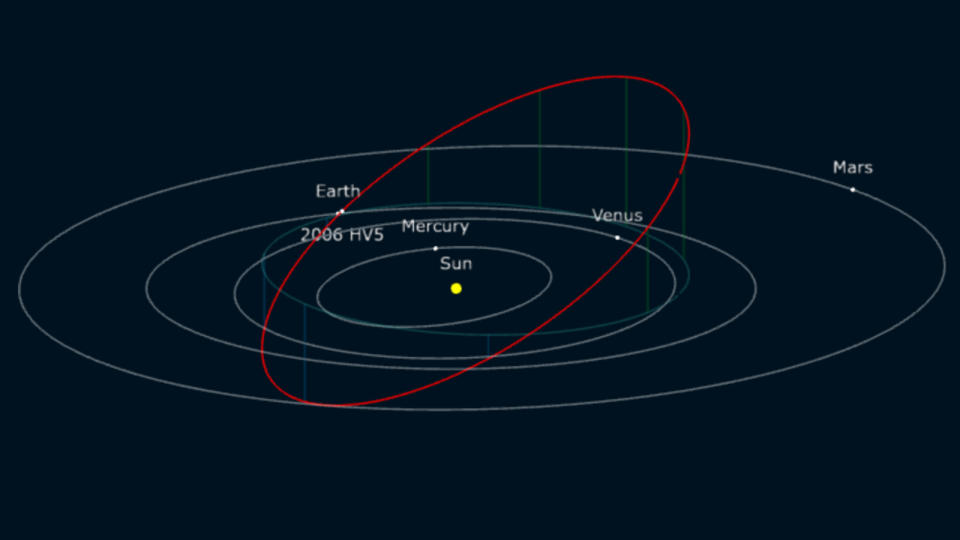'Potentially hazardous' asteroid as tall as the Eiffel Tower will zoom by Earth today


A "potentially hazardous" asteroid that spans the length of the Eiffel Tower will shoot past Earth today (April 26). But fear not, the enormous space rock will sail safely past our planet, according to NASA.
The asteroid, known as 2006 HV5, reached its closest point to Earth at around 12:00 a.m. EDT at a distance of around 1.5 million miles (2.4 million kilometers), according to the Center for Near Earth Object Studies (CNEOS) at NASA's Jet Propulsion Laboratory in Pasadena, California. That is more than six times further away from our planet than the moon.
2006 HV5 is estimated to be around 1,007 feet (307 meters) wide, plus or minus 249 feet (76 m), according to CNEOS. The Eiffel Tower stands at 1,082 feet (330 m).
The hefty space rock is traveling at around 38,900 mph (62,600 km/h) relative to Earth and takes around 282 days to orbit the sun, according to CNEOS.

A potentially hazardous asteroid (PHA) is any asteroid measuring more than 460 feet (140 m) in diameter and comes within 4.65 million miles (7.48 million km) of Earth, or roughly 20 times the average distance between Earth and the moon. There are around 2,300 known PHAs, and although most of them will never come close to touching Earth, they are large enough to cause catastrophic damage were they to strike our planet.
But even if one of these goliaths was headed straight for Earth, NASA is now fairly confident it could push the errant space rock off course thanks to the Double Asteroid Redirection Test (DART) mission, which successfully redirected an asteroid by smashing a spacecraft into it in September 2022.
RELATED STORIES
—Asteroid feared to hit Earth in 2046 will almost certainly miss, NASA says
—Could an asteroid destroy Earth?
2006 HV5 is not the only PHA that has closely zipped past Earth recently.
On April 6, a PHA measuring between 393 and 853 feet (120 to 260 m) across passed within 1.8 million miles (2.9 million km) of Earth. And a humongous PHA, which measured somewhere between 1,900 and 4,265 feet (580 to 1,300 m), passed by Earth on Feb. 15 at a distance of about 2.8 million miles (4.5 million km) from our planet.
Between Feb. 27 and Feb. 28, two more PHAs — 2006 BE55 and 2012 DK31, which both measured around 450 feet (137 m) across — safely sailed past Earth, along with a third, smaller asteroid.

